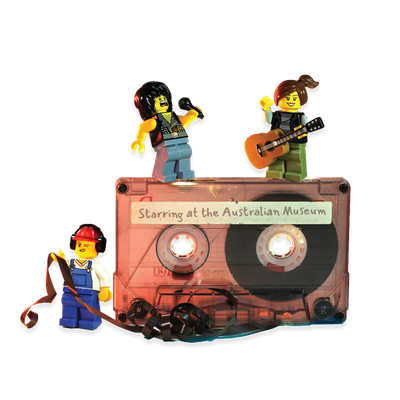Your search returned 109 results
By Page Type
By Tag
- All
- fish (966)
- blog (698)
- fishes of sydney harbour (400)
- First Nations (293)
- Blog (236)
- AMRI (169)
- archives (165)
- Aboriginal and Torres Strait Islander (135)
- Eureka Prizes (131)
- insect (126)
- Ichthyology (125)
- geoscience (109)
- minerals (102)
- climate change (98)
- podcast (94)
- Fish (91)
- Anthropology (89)
- International collections (80)
- Minerals Gallery (78)
- wildlife of sydney (78)
- Labridae (77)
- frog (73)
- gemstone (70)
- history (63)
- photography (63)
- staff (61)
- Mollusca (60)
- gem (59)
- Birds (58)
- education (57)
- Gems (56)
- Indonesia (56)
- AMplify (54)
- shark (54)
- people (53)
- exhibition (51)
- earth sciences (50)
- past exhibitions (50)
- Gobiidae (48)
- Pomacentridae (45)
- sustainability (45)
- Serranidae (44)
- science (43)
- lifelong learning (42)
- Earth and Environmental Science (41)
- Syngnathidae (41)
- Ancient Egypt (40)
- Bali (40)
- bird (40)
- dangerous australians (40)
-
Linarite
https://australian.museum/learn/minerals/mineral-factsheets/linarite/This is one of the best linarite specimens in existence. Its chemical composition is lead, copper hydroxy- sulphate.
-
Silver with Acanthite
https://australian.museum/learn/minerals/mineral-factsheets/silver-with-acanthite/This magnificent twisted crystalline wire silver with acanthite (silver sulphide) is from the classic old locality of Kongsberg, Norway.
-
Anglesite
https://australian.museum/learn/minerals/mineral-factsheets/anglesite/Transparent, large and flawless anglesite crystals are rare, and some crystals from the Toussit Mine have been of sufficient quality for cutting beautiful faceted gems.
-
Wulfenite
https://australian.museum/learn/minerals/mineral-factsheets/wulfenite-mexico/This grouping of red-orange blockshaped crystals is a fine example of this form of wulfenite and the reason why so many people refer to these crystals as caramel sweets.
-
Diorite
https://australian.museum/learn/minerals/mineral-factsheets/diorite/This small piece of diorite, an igneous rock, may appear unpretentious, but it has an incredible history.
-
‘Dinosaur’ Gold Nugget
https://australian.museum/learn/minerals/mineral-factsheets/dinosaur-gold-nugget/This gold nugget, worn smooth by the action of water, has an uncanny resemblance to a prehistoric reptile, and has been called the ‘Dinosaur’ gold nugget.
-
What are minerals?
https://australian.museum/learn/minerals/what-are-minerals/Minerals are the building blocks of our planet. Discover what they reveal about the history of Earth and our solar system and what makes them so essential to our existence.
-
Gemstones
https://australian.museum/learn/minerals/gemstones/Gemstones are prized for their beautiful colours and patterns and are used in a range of applications including jewellery, decorative items and as important features of mineral collections.
-
Chapman Minerals on the move once more
https://australian.museum/learn/news/blog/chapman-collection-move/After being on display for two decades at the AM, the Chapman Collection is about to embark on a journey to regional NSW. The Collection is home to hundreds of perfectly formed and beautiful crystals; delightful displays of light, colour and chemical diversity.
-
Water and sedimentary transport
https://australian.museum/learn/minerals/shaping-earth/water-and-sedimentary-processes/Water plays a vital role in most sedimentary processes. Pure water itself has little effect on rocks. It is the dissolved gases in water, particularly carbon dioxide, that cause the chemical decay of minerals and mineral dissolution.
-
Find out more
Tails from the Coasts
Special exhibition
On now![]()
-
Find out more
Burra
Permanent kids learning space
10am - 4.30pm![]()
-
Discover more
RELICS
Special Exhibition
Opens 16 August 2025![]()
-
Discover more
Minerals
Permanent exhibition
Open daily![]()





